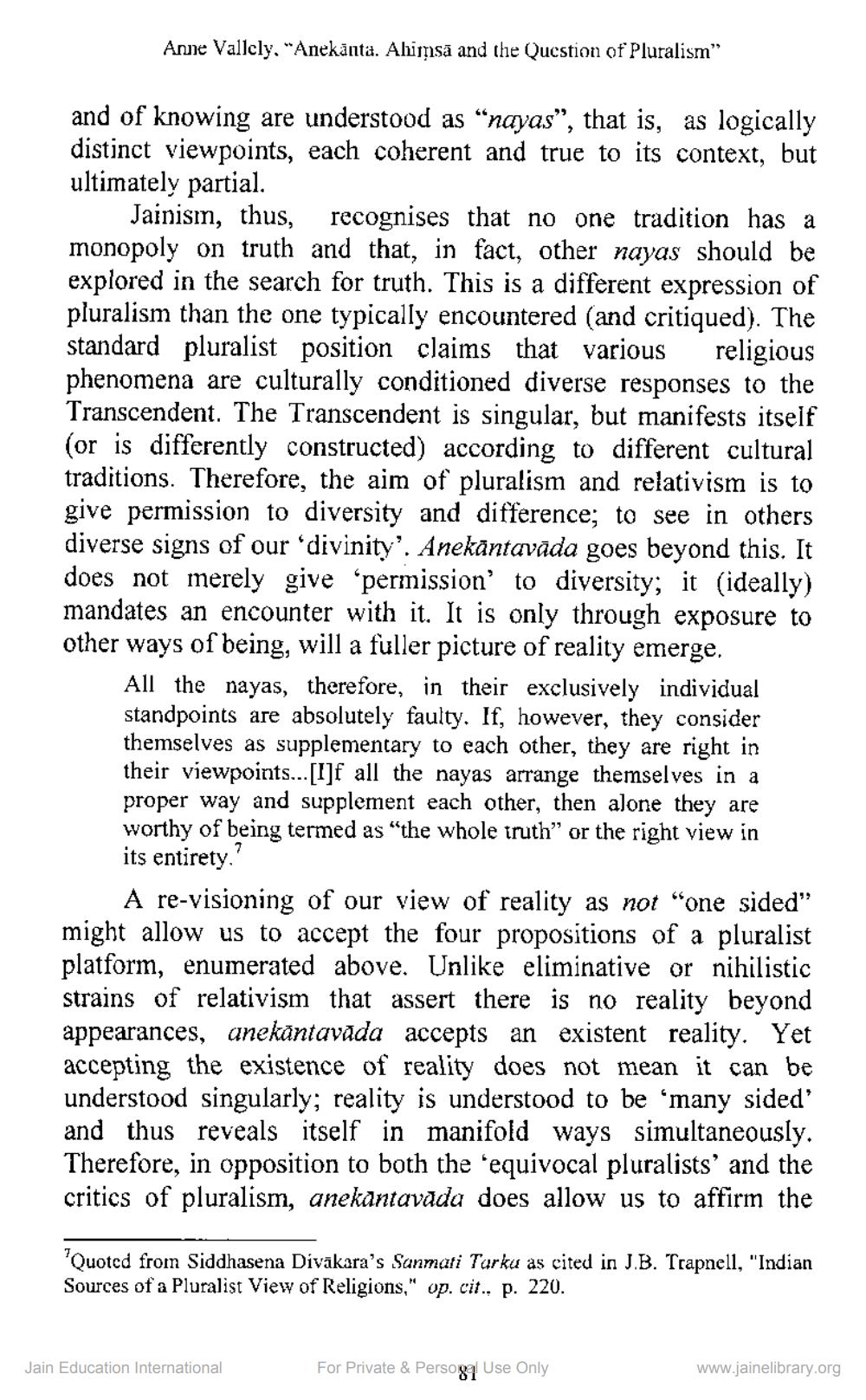Book Title: Anekanta Ahimsa and Question of Pluralism Author(s): Anne Vallely Publisher: Z_Lessons_of_Ahimsa_and_Anekanta_for_Contemporary_Life_014006.pdf View full book textPage 9
________________ Anne Vallcly, “Anekanta. Alimsā and the Question of Pluralism" and of knowing are understood as “nayas", that is, as logically distinct viewpoints, each coherent and true to its context, but ultimately partial. Jainisin, thus, recognises that no one tradition has a monopoly on truth and that, in fact, other nayas should be explored in the search for truth. This is a different expression of pluralism than the one typically encountered (and critiqued). The standard pluralist position claims that various religious phenomena are culturally conditioned diverse responses to the Transcendent. The Transcendent is singular, but manifests itself (or is differently constructed) according to different cultural traditions. Therefore, the aim of pluralism and relativism is to give permission to diversity and difference; to see in others diverse signs of our 'divinity'. Anekāntavāda goes beyond this. It does not merely give permission' to diversity; it (ideally) mandates an encounter with it. It is only through exposure to other ways of being, will a fuller picture of reality emerge. All the nayas, therefore, in their exclusively individual standpoints are absolutely faulty. If, however, they consider themselves as supplementary to each other, they are right in their viewpoints... [I]f all the nayas arrange themselves in a proper way and supplement each other, then alone they are worthy of being termed as "the whole truth” or the right view in its entirety. A re-visioning of our view of reality as not "one sided" might allow us to accept the four propositions of a pluralist platform, enumerated above. Unlike eliminative or nihilistic strains of relativism that assert there is no reality beyond appearances, anekantavada accepts an existent reality. Yet accepting the existence of reality does not mean it can be understood singularly; reality is understood to be ‘many sided' and thus reveals itself in manifold ways simultaneously. Therefore, in opposition to both the 'equivocal pluralists' and the critics of pluralism, anekantavada does allow us to affirm the 'Quoted from Siddhasena Divākara's Sanmati Tarku as cited in J.B. Trapnell, "Indian Sources of a Pluralist View of Religions," op. cit., p. 220. Jain Education International For Private & Persogn Use Only www.jainelibrary.orgPage Navigation
1 ... 7 8 9 10
